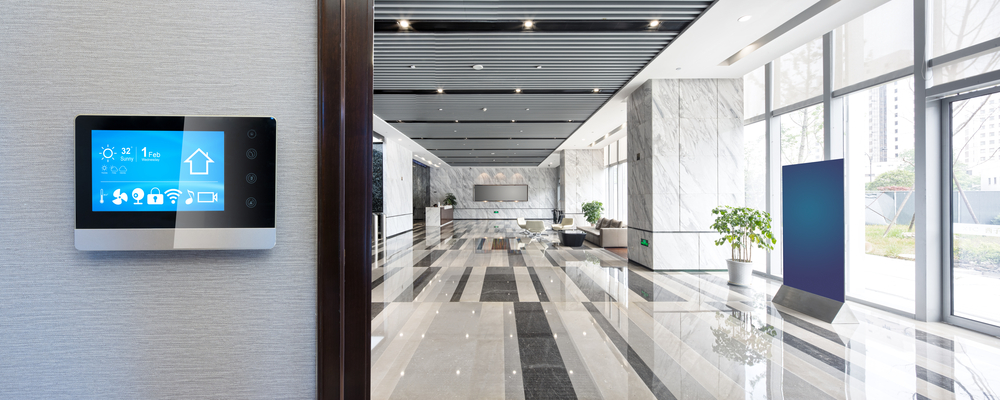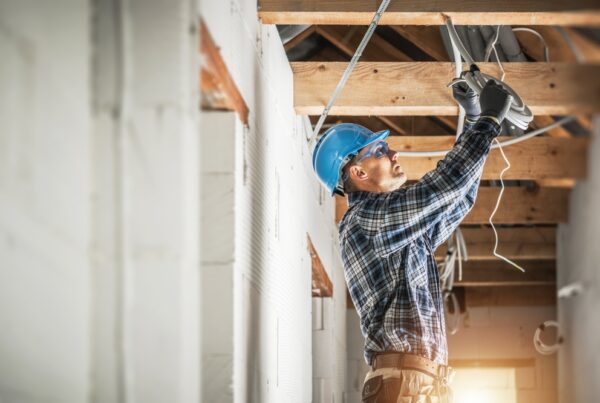The smart building revolution is rapidly gaining momentum in Australia, reshaping the landscape of the real estate market with innovative technologies that enhance the functionality, efficiency, and sustainability of buildings.

In 2023, the prefabrication industry advocacy group PrefabAUS launched a 10-year roadmap to guide the growth of the prefabrication and smart building sector. By 2023, their goals include:
- Doubling smart building penetration in new construction from 15 per cent to 30 per cent.
- Demonstrate 20 per cent savings in construction and lifecycle costs for smart, prefabricated buildings, along with a 12-week reduction in construction time and 50-80 per cent reductions in waste and embodied carbon.
- Commencing production of 10-star energy-rated buildings through prefabrication and smart technology integration.
In the same year, the CSIRO, Australia’s national science agency, introduced the $11 million Digital Infrastructure Energy Flexibility (DIEF) pilot project. This initiative supports flexible energy demand and empowers consumers to manage their electricity usage, saving money and easing pressure on the grid.
Leon Ward, Regional Lead for PlanRadar Australia and New Zealand, comments, ” Smart buildings are defined by their ability to use interconnected systems to collect and analyse data that optimises building operations and increases efficiency. As technology continues to advance, we’re seeing that the Australian construction and property sectors are undergoing significant transformations, integrating Internet of Things (IoT) devices, advanced sensors, and artificial intelligence to create more intelligent infrastructure and improve the quality of life for occupants.”
Key drivers behind the rise of smart buildings in Australia
Australia’s stringent environmental regulations and a growing demand for sustainable real estate are propelling the rise of smart buildings. The Australian government plays a crucial role in encouraging green building practices through tax incentives and certifications such as NABERS and Green Star. In addition, technological advancements in IoT, AI, and data analytics are making sophisticated building management systems more accessible, improving operational efficiency and reducing energy consumption.
The COVID-19 pandemic has also shifted workplace dynamics, increasing the demand for hybrid-friendly designs that incorporate health and safety features. Smart buildings are ideally suited to these evolving needs, offering remote connectivity, health monitoring technologies, and contactless systems for a healthier, safer environment.
Benefits of smart buildings for developers and property owners
Smart buildings offer numerous advantages, particularly in operational efficiency and cost savings. By utilising energy management systems, predictive maintenance, and automated processes, these buildings reduce utility expenses and prevent costly repairs. Smart features also enhance property value, appealing to tenants who prioritise sustainability and convenience.
Leon Ward adds, “Investing in smart building technologies is vital for future-proofing properties, as these innovations are rapidly becoming the norm in both commercial and residential sectors, ensuring that investments remain competitive and valuable in the evolving real estate landscape.”
The benefits for tenants: How smart buildings improve the user experience
Smart buildings enhance tenant experiences by reducing utility costs, improving comfort and increasing security. Advanced features, such as facial recognition, access control, and air quality sensors ensure a safer, healthier indoor environment. Furthermore, smart home technologies allow tenants to control lighting, temperature, and entertainment systems with ease, enhancing convenience
Overcoming challenges in smart building development
Smart building development faces several challenges. High initial costs can deter some developers, though these are offset by long-term savings. Technology integration, especially for retrofitting older structures, requires seamless compatibility, adding complexity. Data privacy remains a critical concern, as does the skills shortage in the smart building sector. Training talent proficient in smart technologies is essential for continued growth.
Embracing the future of smart buildings in Australian real estate
Australian real estate is poised to evolve significantly with AI and machine learning, enabling buildings to autonomously optimise energy usage and maintenance. Smart buildings are also central to Australia’s smart city initiatives, enhancing urban planning with connectivity and liveability.
Leon Ward concludes, “Ultimately, smart buildings are reshaping the landscape of Australian real estate, offering developers, property owners, and tenants a future marked by increased efficiency, enhanced value, and enriched living environments.”









